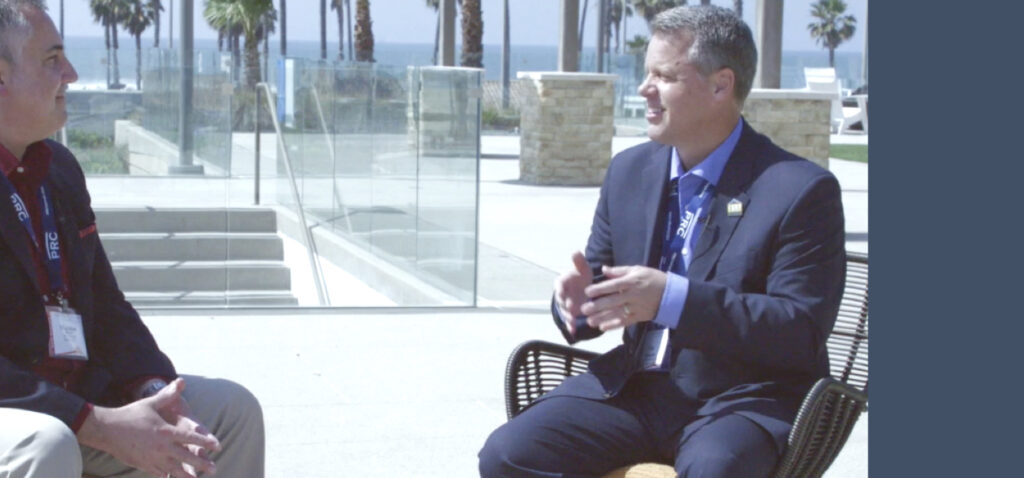Share:

Editor in Chief: HECMWorld.com
As a prominent commentator and Editor in Chief at HECMWorld.com, Shannon Hicks has played a pivotal role in reshaping the conversation around reverse mortgages. His unique perspectives and deep understanding of the industry have not only educated countless readers but has also contributed to introducing practical strategies utilizing housing wealth with a reverse mortgage.
Shannon’s journey into the world of reverse mortgages began in 2002 as an originator and his prior work in the financial services industry. Shannon has been covering reverse mortgage news stories since 2008 when he launched the podcast HECMWorld Weekly. Later, in 2010 he began producing the weekly video series The Industry Leader Update and Friday’s Food for Thought.
Readers wishing to submit stories or interview requests can reach our team at: info@hecmworld.com.









4 Comments
Can someone please explain to me why the following 3 simple concepts seem to continue to elude so many of the so called smartest minds in the reverse lending industry?
(1) The HECM for purchase- There are so few of these loans originated that they don’t even warrant mention. Let alone wasting ones time trying to convince realtors to suggest it to their clients when most realtors just like everyone else, have a negative view of the reverse mortgage.
(2) The benefits of financial planners as referral partners- one would think that this failed strategy would be immediately abandoned after reading the recent reverse mortgage daily article titled ” DATA CONFIRMS THAT REVERSE MORTGAGE BORROWERS HAVE LITTLE WEALTH OUTSIDE OF HOME”
See link to article below in case you missed it.
https://reversemortgagedaily.com/2019/06/19/data-confirms-reverse-mortgage-borrowers-have-little-wealth-outside-home/
So how many of those seniors do you think have financial planners?
You know the ones identified in the article who have no wealth aside from home equity and who have now been confirmed to represent the majority of reverse mortgage borrowers.
How about none!
If you have no assets then there is nothing to plan!
How about making the reverse mortgage their plan?
No, that’s too much like right.
So tell me again how for such a long period of time so many “industry leaders” have arrived at the conclusion that the financial planner referral strategy is successful?
And based upon the data in the above mentioned article, how can it be logically justified that the financial planner referral strategy is gaining traction?
(3) Everyone in the industry should already know that AAG & One Reverse are the top 2 retail reverse mortgage lenders according to reverse market insights top 100 reverse originators report.
Furthermore, they are so far ahead of everyone else (from a retail standpoint) that its not even a competition.
Here is a thought?
Reverse lenders should attempt to market the product in similar fashion to what the top 2 retail reverse lenders are doing?
What am i thinking, that makes absolutely no logical sense, right?
Wait? Didn’t the FHA create the reverse mortgage for the large audience of seniors who represent “the average Joe” who’s income decreases due to retirement and through the reverse mortgage, can leverage their home equity to age in place without incurring a monthly payment?
Because that demographic group represents the larger audience of seniors representing 80% of the senior population, right?
No, lets not do that.
Instead our industry should focus its attention on convincing financial planners, most of whom hate our industry and many of whom are restricted from referring the reverse mortgage to their clients.
Because they represent less than 20% of the senior population.
let’s convince them to suggest the reverse mortgage to their wealthy senior clients “who don’t need money”.
Yeah, that’s a better idea.
SMH
Kevin Vasquez
Kevin,
You had every right to rely based on an article appearing in RMD. Thousands of us rely on their journalism daily. In this case, however, that reliance was misplaced. Here is why.
The article described a session of the NRMLA Eastern Conference earlier this year. The presenter was Edward Seiler of Dworbell, Inc. You can hear the presentation and view the slides from Edward’s session on the NRMLA website in the Agenda portion of the May 2019 NRMLA Eastern Conference at https://www.nrmlaonline.org/event/2019-eastern-regional-meeting/agenda
The information regarding homes and other assets is shown on slides number 10 and 11 which come from the Moulton, Loibl, and Haurin Study published in the HUD Cityscape publication in 2017. The Moulton Group (hereafter referred to as Moulton) selected its sample of under 1,800 HECM counseled household sessions from a pool of about 30,000 but they were all from the same counseling agency. The counselees were counseled during the period of 2006 through 2011 which is presented in the Abstract to the Moulton study.
The problem with this very small and biased sample is that it represents just 0.25% of the 715,913 HECM case numbers assigned (CNAs) in 2006 through 2011. The population from which the sample was selected was just 4.2% of that same 715,913 group of CNAs. So from an insignificant pool of counselees, a sample was selected that supposedly represents all 715,913 CNAs ? That is a horrible subpopulation size from which to pick any sample. So there is no way this sample is representative of all the 715,913 CNAs.
So as to your conclusions about today’s average HECM borrower, you present nothing more than old data from a questionable sample size. Yes, you depended on the reliability of RMD but that is no excuse for your lack of responsibility for the data you use. I pointed these very same problems out back in 2015 when Moulton published another study from this same data on alternatives to financial assessment. On June 25, 2019, RMD posted my reply to your similar June 20, 2019 comment. Don’t you even look at the responses you receive from others? So why are still promoting such unreliable data???
Have you even looked at any national data on the borrowers related to HECMs endorsed after fiscal 2015 or as a separate category, the HECM borrowers with HECMs endorsed after March 31, 2018? Without accurate information on those two groups, you have little idea about the financial characteristics of reverse mortgage borrowers in today’s HECM environment.
I think those are valid concerns. In fact, in the video I expressed a similar concern that we have “struggled to gain traction with the Realtors.” However, my first thought is to not confuse loan volume with profitability of the loans you originate.
The retail volume leaders generally drive traditional “needs-based” borrowers to 1-800 numbers by using large marketing budgets. As such, their primary business model does not involve referral partnerships. In addition, this focus is also one reason for the low H4P and financial planning loans to which you alluded. But at the end of the day, this is an expensive path to pursue.
However, other lenders and brokers don’t operate that way. They spend much less on marketing. They realize that working with realtors and financial services professionals results in a much lower cost per funded loan. There may be less of this volume, but it doesn’t require heavy advertising.
So, while the simple answer is “do what the volume leaders do,” that’s not always practical, or prudent, for most lenders and brokers.
Regarding realtors and advisors that are often disinterested, that’s often true. But I haven’t found that this is caused by a negative view of the program. It’s because the key concepts and advantages are still unfamiliar to them.
For example, I was contacted by a real estate office to speak to their agents this week. It was scheduled for 30 minutes, yet they asked questions for two hours. Keep in mind, they reached out to us. They wanted to know how this product could help them work with older homebuyers.
Working with referral partnerships isn’t always easy, but for most brokers and smaller lenders, this may be the most profitable path. And because the market penetration is still very low, working with real estate professionals may also represent the single largest growth potential.
Dan,
I would also add to what you noted about two of our top ten lenders. They do not split the HMBS issuance portion of HMBS premiums with anyone. Lenders who are not issuers of HMBSs have lower revenue dollars to start with. The portion of costs connected to issuance are not greater than the portion of the premium charged for these services. So these two large lenders have premium dollars most lenders and brokers do not have. If AAG and One Reverse just limited the cost of TV ads to the portion of HMBS issuance profits they earn, they would still have a lot of ads.
Then we come to multiplying ads by purchased volume. This is achieved through media purchase discounts for higher ad volume. So AAG can obtain a disproportionately higher number of TV ads than other lenders in our industry just because based on their closing volume, they can afford to make huge media purchases.
Now is the time that the cost of TV and radio ads rise. Political seasons mean more demand chasing the same available viewing times. So those who cannot afford to raise their ad purchasing budgets will see even fewer ad times available to them. AAG and One Reverse are in a much different media purchase situation than most other lenders.
Even though I have much to say about the pragmatical ethical problems in the industry with H4P and why other than distinct avarice are traditional and H4P approached so differently in the industry. There is no fiduciary or best interests standard involved. H4P is treated as if it is without question a full draw product while traditional HECMs are amazingly much different. The H4P sales practices must be changed in the industry.